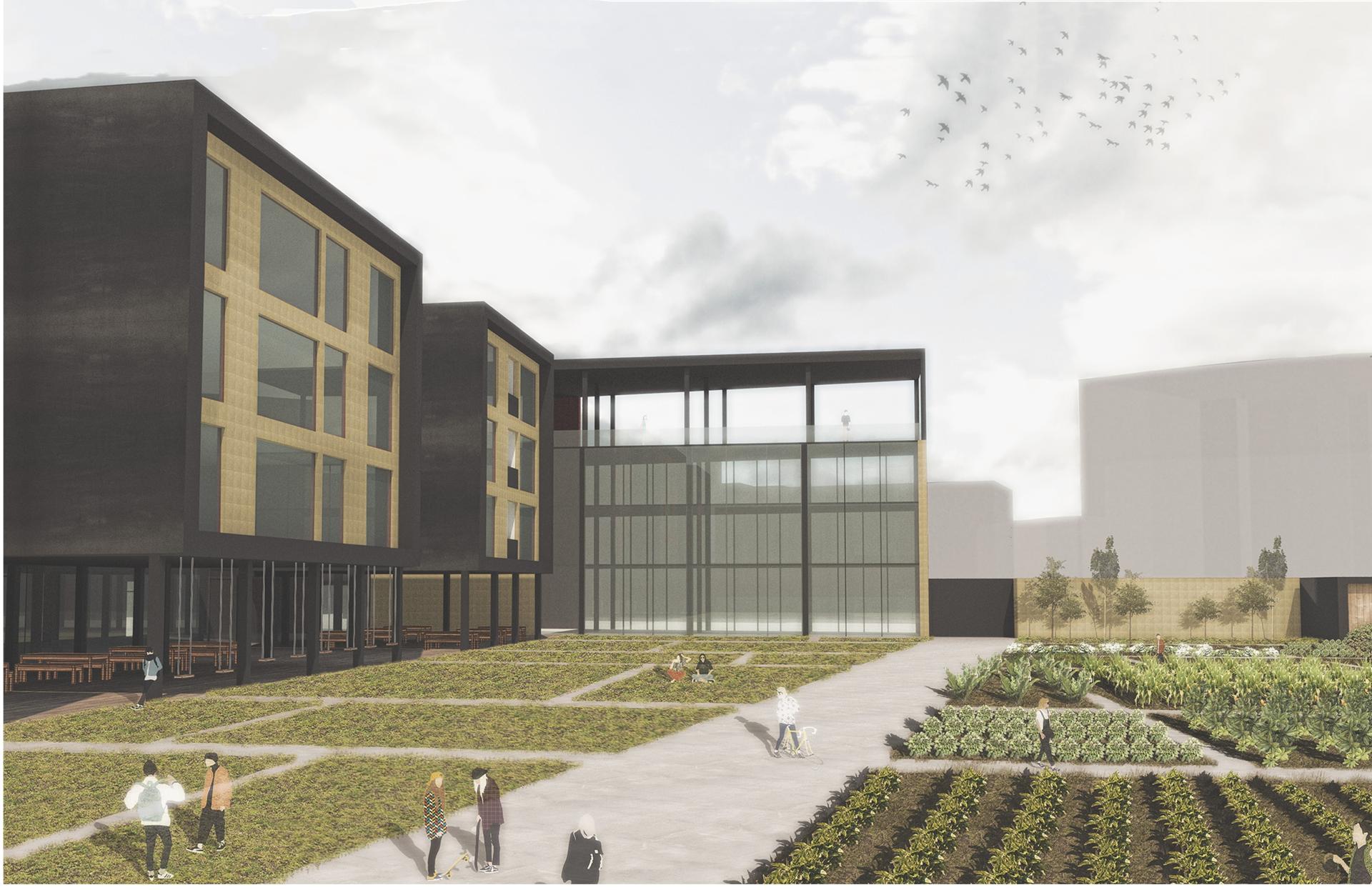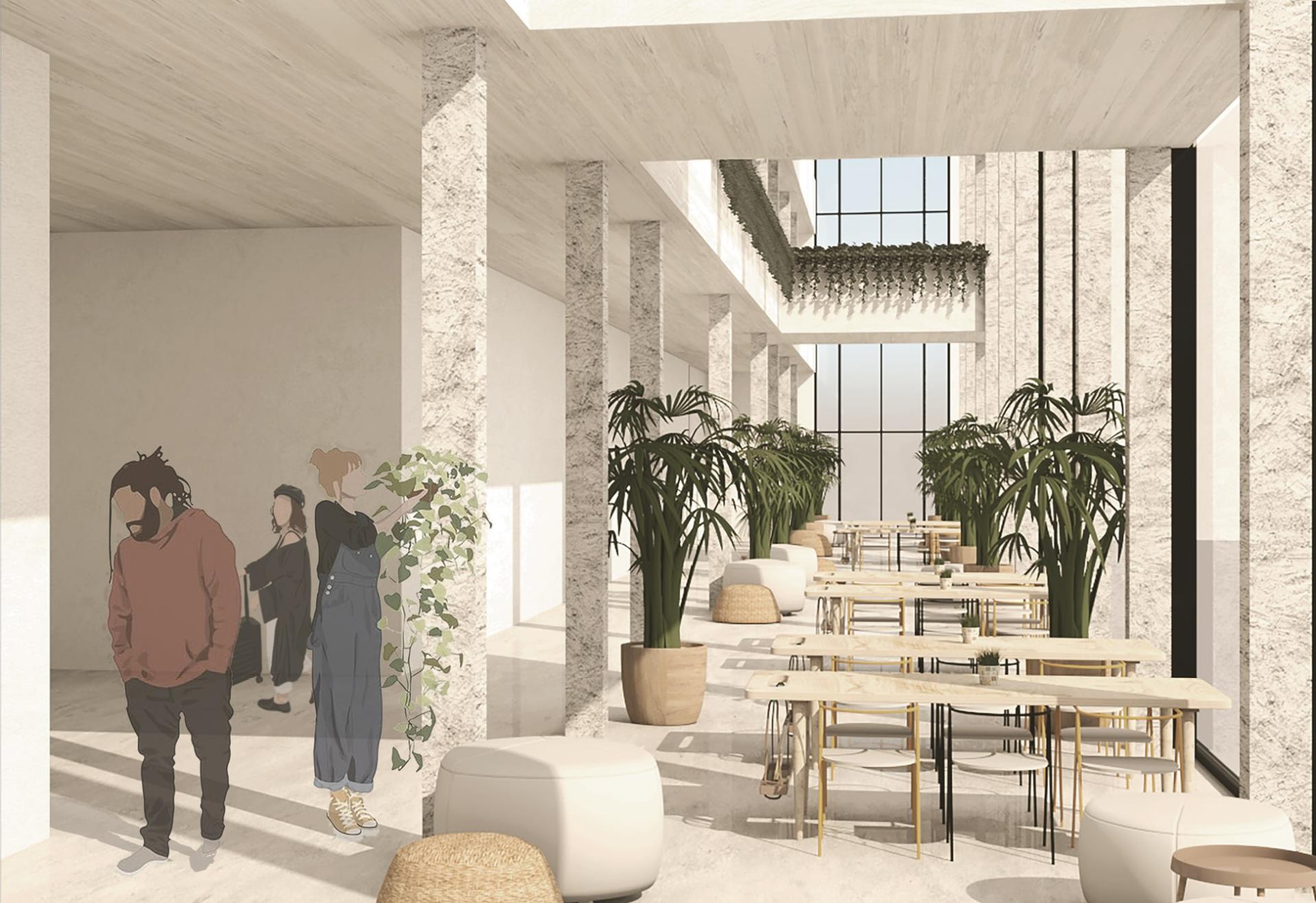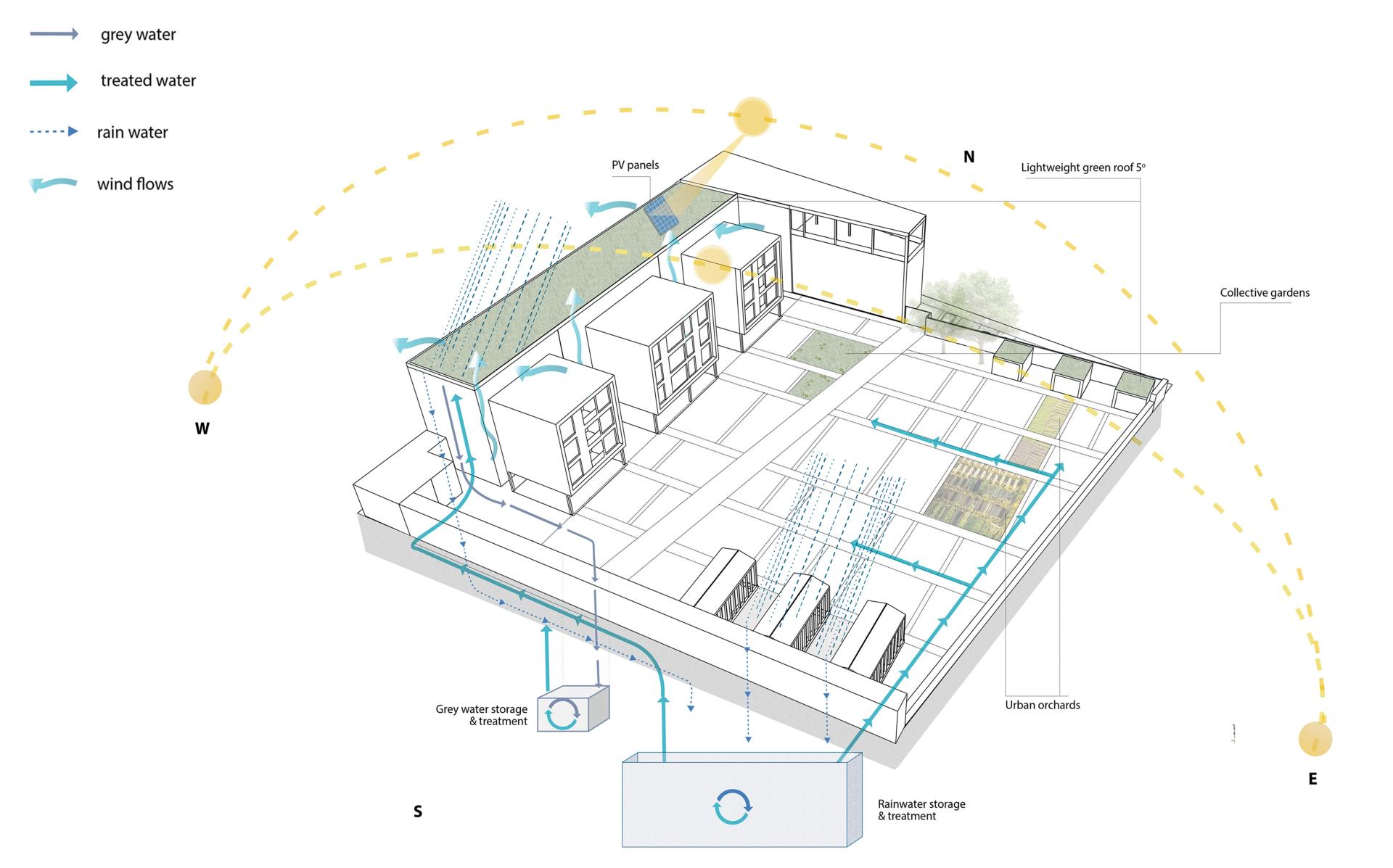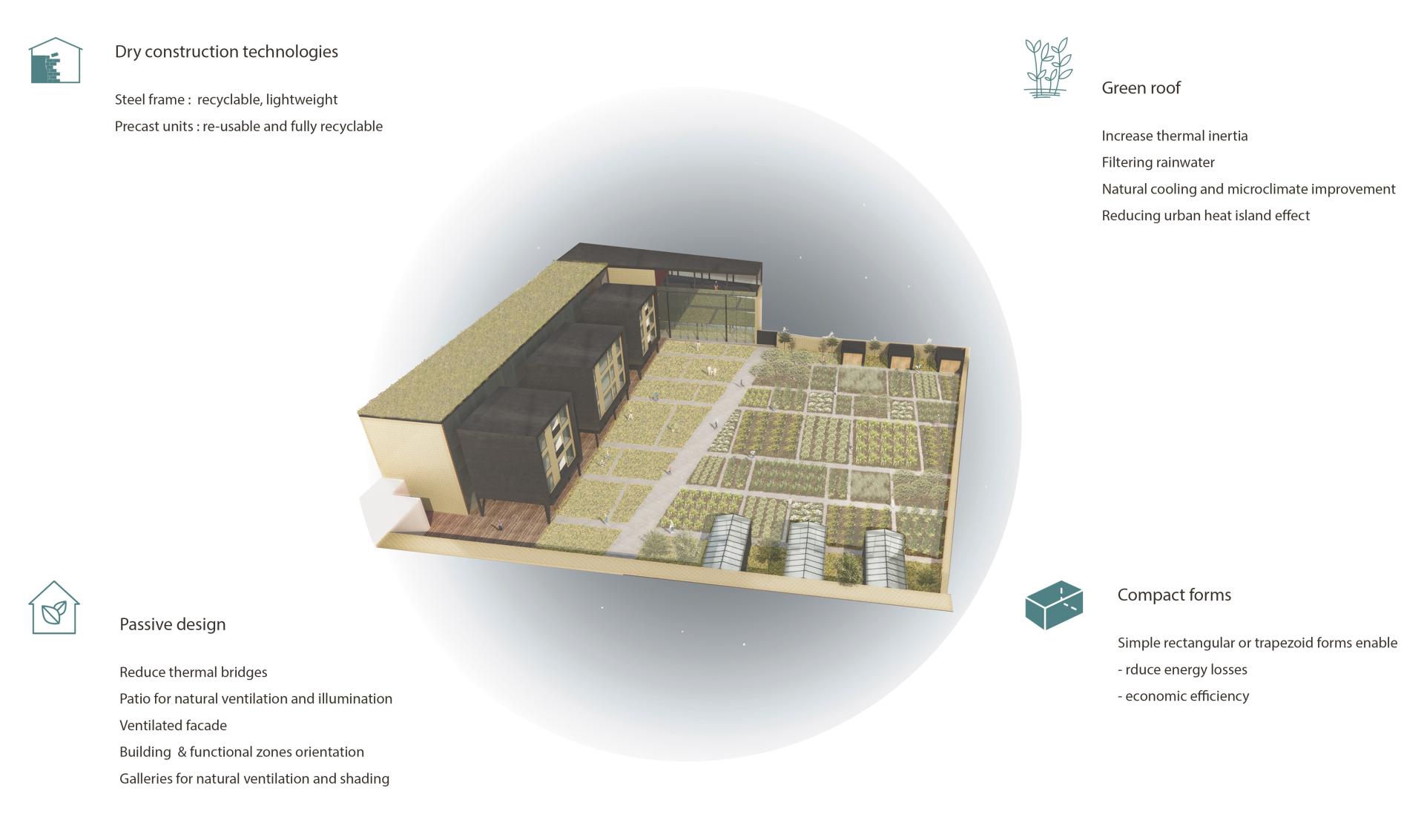CO-ROME COLLECTIVE LIVING
Basic information
Project Title
Full project title
Category
Project Description
Recreate communities and reinvent geographies of association by providing affordable housing supply and high quality living conditions in european cities, such as Rome, illustrates the purpose of this collective living project. Combining green and circular activities, in order to mobilize local socioecological knowledge, with adaptation of eco-friendly and inclusive design solutions, aims to introduce a new urban model of shared and co-creative living, which implies long-term resilience.
Geographical Scope
Project Region
Urban or rural issues
Physical or other transformations
EU Programme or fund
Which funds
Description of the project
Summary
Reconceptualizing Le Corbusier's famous "building as a machine", in order to adapt it to the contemporary needs is the starting point of this project idea. An “ecological machine” that combines nature and technology in order to produce efficient and sustainable living environments. While big european cities are becoming more and more populated, they tend to offer poorquality living conditions, such as unaffordable housing, inadequate public space for socializing and less green infrastructure. The idea, in order to tackle these problematics is an architectural intervention, situated in the italian capital city of Rome, which introduces a new shared living model, as a keystone to built a wider sustainable urbanized habitat. Taking into consideration the UN 17 Sustainable Development Goals - and particularly Goals n. 2,3,5,6,7,10,11,12,13,15 & 17 - the collective living project, that will host about 60 people, aims to encourage community mentality and promote a social and affordable housing solution, an environmentally friendly and innovative building paradigm, as well as an open and collaborative ecostructure. The residential mixed-use complex facilitates adjustable housing units, along with shared functional and social spaces, co-working facilities, cultural and experimental spaces (workshops), as well as a wide green infrastructure and urban farming settlements. Bringing more nature within the artifact, not just by using vegetation as a decorative element but as a vital parameter of building points out the numerous benefits plants offer to the human being and the environment. Moreover, since Rome suffers from floods and heat island effect, water management strategies along with the green infrastructure are applied. Decreasing living costs and energy consumption while increasing opportunities of developing socio-ecological knowledge and support within a community stands for the methodological narrative for an adaptive and sustainable urban living.
Key objectives for sustainability
Living and not just surviving is what the collective housing project represents by fostering the development of community resources by community members to thrive in a changing environment. In terms of sustainability, the project looks upon an engagement of urban farming (urban orchards) - as an already widespread local socio-spatial practice - with collective living units, as a shared and affordable housing solution. A fundamental characteristic of this initiative is the facilitation of diverse types of living necessities, by eliminating travel times or logistical barriers to meeting and connecting with the community and by creating more compact living spaces. Ecological sustainability will be achieved by several actions and strategies, opting circularity, such as the careful selection of construction materials (natural, reclaimed and recyclable) and the application, as far as possible, of dry construction methods, so as to allow structural elements to be dismantled and reassembled or reused in the future. Moreover, elimination of soil footprint and constructed space is adopted by the following steps: 1.Guarantee a free space of 50% of the total lot surface dedicated to gardening and urban agriculture, which operate as a green filter and a space of interaction. Also enabling temporary structures dedicated to hydroponics and social activities. 2.Combine spatial relations and functions, as well as increase multifunctional spaces. 3.Release spatial units, so to create flexible space and adaptable to actual or future needs. 4.Additionally, integration of multiple levels (typology) of social hubs/spaces increases the opportunities of sociability and saves up energy consumption (aprox. 30% common spaces + 20% private spaces). 5. Stormwater mitigation, rainwater harvesting and grey water treatment and reuse. 6. Finally, optimum orientation of the building volumes is considered, along with passive and active energy systems.
Key objectives for aesthetics and quality
The ecology of place is the first key objective that adds aesthetic value to the project. Designing microclimates and landscapes through vegetation increases biodiversity and enhances life. Dedicating almost half of the allotment surface to urban farming, vegetation and green space for recreational use significantly increases the aesthetic aspect and attractiveness of space. Creating a greener and healthier living environment, by engaging nature into built space, induces not only mental benefits but raises creativity and sociability among community members and fosters the sense of being integral parts of their natural surroundings. Both human body and mind perceive surrounding atmosphere and nature as a sensorial experience that increases wellbeing. Forming a multi-cultural community highlights the second objective, since the members of different walks of life interact with their habitat and intervene in it, they produce multiple "places" and experiences.The new shared living model is conceived as a non -commodified model that promotes an alternative solution of ownership and management, rather than another “affordable” luxury hub. It is based on the idea that co-living communities have the power to become key contributors to neighborhood improvement, as part of an ecosystem of community groups, co-operatives, live-work collectives, start-ups and social impact labs. Rather than needing to find small, homogeneous and highly committed groups of individuals, co-living advocates could deploy effective approaches to civic empowerment and community development. In that sense, place bonding and active citizenship can thrive in these collective spaces. Living in a community enhances every-day life, since it provides a “safety network”, a place built upon collaboration and sharing, where every single individual is an active part of the evolution of this place and space. This is a premise for quality living experience.
Key objectives for inclusion
The project proposal aims to engage diverse communities, respect to multiuser groups, dwelling typologies, collective space types, as well as socialization and communing opportunities. The idea is that younger and older people live together in supportive communities, where the needs of all groups are acknowledged and met. By promoting affordable residential solutions, as just a part of a broader system of sharing every-day moments and living spaces, a diverse range of residents from entrepreneurs, lowincome families to recent migrants and artists will have the chance to interact and overcome social boundaries in order to establish solid communities. The Collective Housing Project is thought of as a culturally and socially open hub, which makes no exception to individuals or social groups who desire to be part of the community. Inclusion is also a fundamental characteristic of the urban orchards system, where people from all social and age groups, from kids to elders, can find a place of communing, of interaction and exchange of social and ecological knowledge. In addition, being in contact with a livable and natural landscape contributes to mental health and balance. More precisely, urban gardens are a perfect example of an educational and therapeutic space, for minors, people with mental and physical disorders or special abilities. Also, urban farming is famous for its inclusive character and is an activity which brings up triple benefits since it engages social practice, productive and economic activity, as well as improvement of the microclimate. Moreover, laboratories (botteghe) and workshops offer the opportunity to experimentation, promotion of circular economy and environmentally friendly practices and economic activities, which aim to involve different actors and social groups. Opting for social inclusion, the whole shared-living model is based on open partnerships and respect among its members, by seeking to adapt horizontal decision-making mentality.
Physical or other transformations
Innovative character
Co-living as the word defines it, is a shared living of human beings among them and with nature. Ecology and sustainability play a key role since they engage people with their environment and with their future habitat. The Collective Housing Project aims to represent and put in action the idea of social ecology and revive the sense of community living and belonging. By combining green and circular activities, in order to mobilize local socioecological knowledge and by adapting eco-friendly and inclusive design solutions, a new urban living model of sharing and co-creativity is projected. The sustainability in terms of environmental and natural conditions is extended to the social inclusion but also aesthetic experience through the co-design and open-minded thinking of the spaces and activities of the Housing Project. In addition, social inclusion in terms of eliminating bounadries and considering more social groups possible as users of space and community members, is going to be achieved through a co-design process that has to minimize architectural boundaries and render also the base values of a multicultural community. Considering also an affordable housing solution is an important step towards inclusion. Aesthetics are also connected in two aspects. Sustainable ecological design uses the natural elements , in terms of plants but also in terms of natural materials that add aesthetic value to the space. Also, the integration of local but also multicultural symbolic and artistic elements, through the co-design of space and the idea of a modular, flexible and easily mofifiable space, contributes to a particular aesthetic that is in a state of constant change and so personalized and unique, The community living, in the end of the day is thought as a dynamic experience, a space of possibilities and moments, that will become sustainable social cores of a wider urban network, which will imply long-term resilience.




